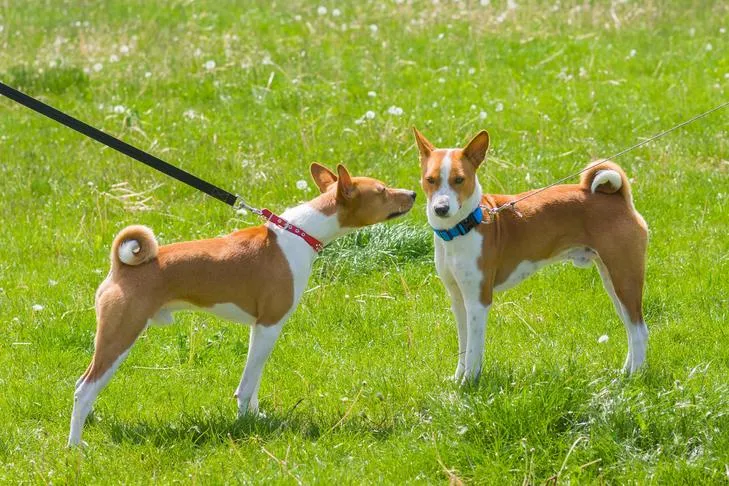Walking your dog should be an enjoyable experience for both of you, a chance to bond and explore the world together. However, for many dog owners, walks often turn into a frustrating tug-of-war, with their beloved companion dragging them down the street. Leash pulling is a common and often challenging behavior that can make daily walks stressful, and even dangerous, particularly with larger or stronger breeds. Beyond the physical discomfort, a dog constantly pulling on their lead can indicate a lack of control and an inability to focus on their handler, making public outings difficult and potentially unsafe for your dog and others. how can I stop my dog jumping up at strangers in situations where they might get overly excited, can also be improved with better leash manners and focus.
While it might seem like an ingrained habit, training your dog to stop pulling on the lead is entirely achievable with patience, consistency, and the right techniques. This comprehensive guide will equip you with 10 practical and effective strategies to transform your dog’s leash manners, ensuring that you and your canine friend can enjoy calm, controlled walks together. Say goodbye to being dragged and hello to harmonious strolls as we delve into the secrets of polite leash walking.
1. Always Reward Good Leash Behavior
It’s easy to focus on what your dog is doing wrong, but positive reinforcement is a powerful tool in dog training. Dogs are more likely to repeat behaviors that are rewarding. This means every time your dog walks with a loose lead, maintaining a relaxed J-shape in the leash, acknowledge and reward that behavior. Rewards don’t always have to be treats; they can also include verbal praise, a gentle pet, or even the opportunity to sniff an interesting patch of grass.
In the initial stages of training, be generous and frequent with your rewards. This helps your dog quickly associate the desired behavior (loose-leash walking) with positive outcomes. As your dog’s understanding and skills improve, you can gradually reduce the frequency of tangible treats and incorporate “life rewards” such as a brief sniff break or a chance to greet a calm passerby, only when the leash is loose. This teaches them that polite behavior on the lead opens up more opportunities for enjoyment.
2. Never Let Your Dog Walk When They Are Pulling
One of the most critical rules in How To Train A Dog To Stop Pulling On Lead is to ensure that pulling never gets your dog what they want – forward momentum. If your dog pulls and continues to move forward, they are being rewarded for the very behavior you’re trying to extinguish. This cycle only reinforces the pulling habit, making it harder to break over time.
The moment your dog applies tension to the lead, stop immediately. Plant your feet firmly and stand still. Do not move forward until the leash goes slack. This might feel tedious at first, and you might find yourself stopping every few steps, but this consistency is key. Your dog will quickly learn that pulling brings the walk to a halt, while a loose leash allows them to continue their journey. This method is often called the “stop-start” or “tree” method.
3. Wait for a Loose Leash Before You Walk
Following on from the previous point, simply stopping isn’t enough; you need a clear signal to resume walking. Once you’ve stopped because of pulling, wait for the leash to slacken. This means it should form a “J” shape rather than being taut. More importantly, wait for your dog to turn their attention back to you. They might look at you, sit, or even walk back to your side to see why the walk has paused.
 Basenjis meeting in a field outdoors, one on leash.
Basenjis meeting in a field outdoors, one on leash.
When this happens, immediately reward your dog with praise and a treat at your side, then resume walking. This teaches your dog that returning their focus to you and releasing tension on the lead is what restarts the walk. Be prepared for this process to be repetitive initially, but with consistent application, your dog will soon understand the connection between a loose leash and forward movement. This reinforces the idea of polite leash walking as the gateway to continued exploration.
4. Incorporate Life Rewards on Your Walk
Beyond traditional treats, leverage “life rewards” to enhance your training and make walks more enriching. Life rewards are the everyday things your dog enjoys, such as sniffing a particular bush, investigating a lamppost, or even greeting a friendly person or dog (if appropriate and safe). Use these as opportunities to reinforce good behavior.
For instance, if your dog walks politely for a certain distance without pulling, release them with a verbal cue like “Go sniff!” to explore for a few minutes. Then, recall them to your side and continue the loose-leash walk. This turns desired behaviors into a currency for their favorite activities, making the training process much more rewarding and enjoyable for your dog. It also helps them understand that working with you leads to greater freedom and fun. This approach can also be useful if you need to teach your dog to stop jumping up when they get excited by these ‘life rewards’.
5. Walk at a Good Pace
Often, dogs pull because their natural walking pace is faster than ours. They want to get moving and explore, and a slow, leisurely human pace can be frustrating for them. While you can certainly train your dog to match your speed, choosing a slightly quicker, more purposeful pace can make it easier for them to learn not to pull, especially in the early stages of training.
A brisk walk can keep your dog more engaged and less inclined to forge ahead. Experiment with different speeds to find a comfortable rhythm that works for both of you. You might find that a slightly faster pace encourages your dog to stay by your side more naturally, reducing the urge to pull and helping them focus on maintaining a loose lead.
6. Be Consistent With Your No-Pulling Rule
Consistency is paramount when teaching your dog anything, especially how to train a dog to stop pulling on lead. It can be tempting to let your dog pull when you’re in a hurry, it’s cold outside, or you just need a quick potty break. However, every time you allow pulling, you are inadvertently setting your training back. Your dog learns that sometimes pulling works, which makes the behavior harder to extinguish.
Regardless of the situation, stick to your no-pulling rule. If you’re short on time, opt for a quick yard break instead of a full walk where you might be tempted to compromise. Until your dog can reliably walk with a loose leash for more than a few feet, commit to making every walk a training opportunity. This unwavering consistency will communicate clearly to your dog that pulling is never an option. This commitment is similar to the consistency needed when trying to train a dog to stop jumping up at visitors.
 Beagle pulling on the leash to sniff while on a walk outdoors.
Beagle pulling on the leash to sniff while on a walk outdoors.
7. Keep Training Sessions Short and Fun
Training a dog that consistently pulls on the leash can be frustrating for both of you. It’s important to keep training sessions short, positive, and upbeat to prevent either of you from becoming discouraged. Longer sessions can lead to fatigue, frustration, and a decline in learning, especially for puppies or dogs with shorter attention spans.
Aim for multiple short sessions throughout the day (5-10 minutes each) rather than one long, arduous walk. The goal isn’t to cover a certain distance but to achieve success with a loose leash, even if it’s just for a few steps. Celebrate every small victory with praise and treats, ending the session on a positive note. This keeps your dog enthusiastic about learning and strengthens your bond. It’s often more effective than trying to how to stop your dog jumping up people in one long session.
8. Be Interesting and Engaging on Walks
The world is full of irresistible distractions for dogs – new smells, interesting sights, and exciting sounds. If you’re disengaged, perhaps on your phone or lost in thought, your dog has little reason to pay attention to you. To counteract external stimuli, you need to become the most interesting thing on the walk.
Talk to your dog, offer unexpected treats, change direction frequently, or stop for a quick game of “find it” with scattered treats. These interactions keep your dog’s focus on you, making them more likely to follow your lead and less inclined to pull towards a distraction. Being unpredictable and interactive makes you a valuable partner on the walk, reinforcing the idea that good things happen when they pay attention to you. You can even use these engagement techniques to help with teaching a dog to stop jumping up when they greet someone.
9. Stay Calm
 Cavalier King Charles Spaniel on a lead outdoors.
Cavalier King Charles Spaniel on a lead outdoors.
Dogs are incredibly adept at reading human emotions. Your mood can easily transmit down the leash, impacting your dog’s behavior. If you become frustrated, anxious, or angry when your dog pulls, you can inadvertently heighten their excitement or anxiety, making them even more likely to pull or react poorly to their environment.
Maintain a calm and composed demeanor, no matter what challenges arise on your walk. If your dog gets over-excited or anxious by a distraction, take a deep breath, relax your shoulders, and communicate a sense of calm to them. A relaxed handler helps create a relaxed dog, making them more receptive to your cues and more capable of managing their own impulses, ultimately contributing to better leash manners. This calm approach is also vital when learning how to stop a dog jumping up at visitors who might inadvertently encourage the behavior.
10. Engage Your Dog In Distracting Situations
Distractions are a major reason dogs forget their leash manners. Other dogs, squirrels, unfamiliar people, or new environments can quickly divert your dog’s attention and trigger pulling. Instead of trying to avoid distractions entirely, use them as training opportunities to build your dog’s focus on you.
When you spot a potential distraction in the distance, proactively engage your dog before they notice it. Offer high-value treats, ask for a simple command like “sit” or “watch me,” or play a quick game. The goal is to redirect their attention to you, reinforcing that staying focused on their handler is more rewarding than fixating on the distraction. Gradually increase the intensity and proximity of distractions as your dog’s focus improves, always rewarding them for choosing to engage with you.
Conclusion
Teaching your dog to stop pulling on the lead is a journey that requires patience, consistency, and a positive approach. By consistently applying these 10 essential tips – rewarding good behavior, never allowing pulling to be successful, waiting for a loose leash, utilizing life rewards, maintaining a good pace, unwavering consistency, keeping sessions short and fun, being engaging, staying calm, and proactively managing distractions – you can transform your walks. Remember, the goal is not just to stop pulling but to build a stronger bond and a more enjoyable partnership with your canine companion. Happy walks await!
